Introduction
If you’re selling on Amazon, you already know that you’re competing against millions of other brands.
Your Amazon sales ranking is a huge factor in determining whether or not you stand a chance to win against your competitors and make more sales.
Here is everything you need to know about the Amazon sales ranking and how you can climb the ranks for your own products!
What is the Amazon Sales Ranking?
Also known as the Amazon Best Sellers Rank, or BSR, the Amazon Sales Ranking is based on how well your product is selling in its specific category. This number ranges from 1 to over 1 million and is usually represented on a bell curve.
With this rank, lower numbers equal more sales, while the higher you fall on the scale (such as closer to a million), the lower your sales.
For any seller, the goal is to achieve #1! Of course, this doesn’t come easy, since you’ll most likely be competing with millions of other products.
Your product will always receive a BSR for its sub-categories, although this doesn’t mean it will receive a ranking for its main category.
For example, if you are selling kitchen utensils, these items are part of the Kitchen & Dining category, which is, itself, nested within the Home category.

Your utensils would get a ranking for the Kitchen Utensils and Gadgets category, so their BSR would be based on how popular they are compared to other kitchen utensils and similar items.
All sellers will be able to tell what products are popular or trending and which ones are not, which can help you make decisions on which products to add to your Amazon FBA store next.
In addition to popularity, your Amazon sales ranking is also an indication of when your product was last sold. This means that the shorter your sales period – the time between each sale – the lower your BSR.
You should expect your product ranking to go up and down on Amazon quite often, since rankings are updated every hour. This means you may see your product go up and down, so don’t be alarmed!
What Makes Amazon Sales Ranking So Important?
ASR is a valuable tool for old and new eCommerce business owners alike! It can tell you a ton about the performance of your products compared to what your competitors of the same category are selling.
Think of your ranking as a snapshot of how you are currently doing in the online marketplace. If your BSR is extremely high, you know you have some work to do.
Keep in mind that the Amazon sales rank is only an indicator of how your product is performing right now and in the previous moment. ASR shouldn’t be used as a metric to indicate sales forecasts for the future.
Without your Amazon sales rank, it would be impossible to know, for instance, if the fact that you made 100 sales last month is good or not.
If you’re selling high-end items that people don’t buy often, 100 sales could be good. But the opposite is also true.
ASR lets you compare instead of looking at your sales data in a vacuum. For instance, if everyone in your category is having a bad sales month, the fact that you made fewer sales may not be your fault if your ASR is still low.
How is the Amazon Sales Ranking Calculated?
Here’s the truth – Amazon doesn’t tell its sellers how ASR gets calculated. This means that what we know is based on educated theories and speculation.
For example, we can easily deduce that your reviews and retail price doesn’t influence your ranking while sales volume does.
However, no one knows exactly what time frame is used to calculate sales volume, although theories suggest it could be anywhere between 12 and 24 hours – or even longer.
Here’s what we do know: items that didn’t get any sales in the last 24 hours don’t all have the same BSR. What does that mean? Most likely, the window is longer than 24 hours.
We can also assume that the most recent purchases on an item have a heavier weight than older purchases, although it’s difficult to tell exactly how much.
This means that if you made a sale last week, this sale wouldn’t influence your ranking as much as a sale you made today.
So, if you’re selling a laptop and a desktop computer, and the laptop generates more sales earlier in the week, it will still have a lower BSR than the desktop computer if the latter made the same quantity of sales a day ago.
Why Does the Amazon Sales Ranking Fluctuate?
We mentioned earlier that you can expect your ASR to fluctuate.
First off, keep in mind that your Best Seller Ranking isn’t updated in real-time! The update windows depend on the rank itself:
- Hourly updates for products in the top 10,000
- Daily updates for products that rank between 10,000 and 100,000
- Monthly updates for products over 100,000
This means that if your ranking is high, you won’t see your numbers improve right away, even if you make a ton of sales in a day (or even a week!)
On the other hand, you can have a single sale that drastically impacts your BSR. The higher your ranking, the more impact a single sale can have, because other products of the same category around the same ranking don’t sell as often.
This also means that your ranking will quickly drop if you don’t make any sales shortly after a rise in the rankings.
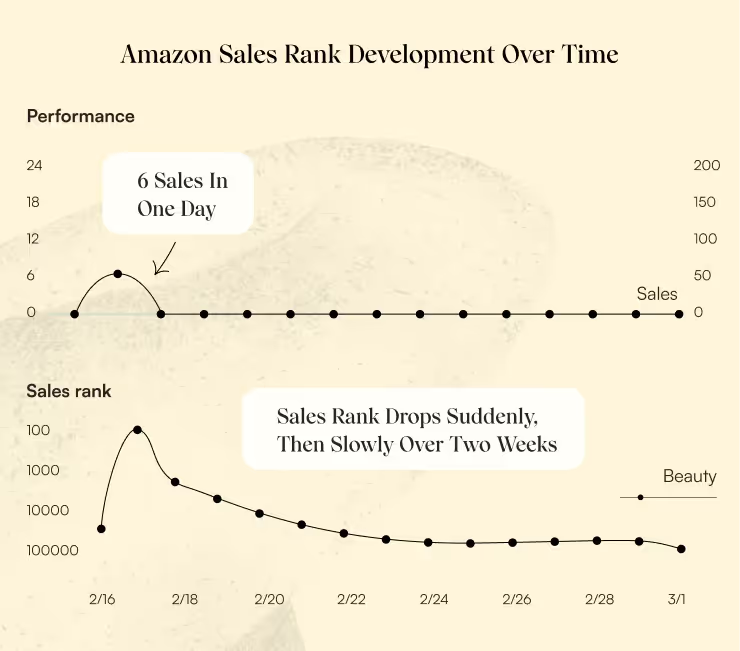
DETAILS ABOUT AMAZON’S SALES RANKING YOU NEED TO KNOW
Now that we’ve covered the basics, here are more important facts to consider when it comes to your Amazon ranking.
You Absolutely Need Sales to Get a Good BSR
It’s easy to think that you can get a good BSR if your product is unique in its category, since there aren’t millions of similar products available. However, your product still needs to gather up sales if you want to climb the rankings!
It’s important to start making sales right when you launch a product and consistently keep making those sales. With this in mind, start thinking of ways to get a boost in sales when you first launch! Keep reading for tips on how to achieve this later on.
Sales Velocity Matters, Not Just Total Sales
A good sales velocity means that your product’s sales are continually increasing. Every day, you’re bringing in more sales. If you want to maintain a good ranking, you need to work on keeping your sales velocity going.
Your Product Needs a Sales History
Although recent sales do have a bigger impact on your product’s BSR, you also need to work on building a solid sales history for this product. BSR is a good indicator of a product’s past sales and sales performance, so getting a strong sales record does matter.
So make sure your product gets daily sales and you’ll help improve your Amazon sales ranking!
Sales Consistency Has a Higher Impact on Your Product’s BSR
If you get a sudden spike in sales, that’s great! Your BSR will also see a spiked increase.
However, you should prioritize consistent sales over yo-yo efforts.
Why? If you can’t sustain a high number of sales, your newly acquired BSR will fall shortly after.
So, instead of pushing a particular product only once in a while, try to be consistent with your efforts.
Seasonality Will Influence Your BSR
When you start doing product research, consider that seasonality will have a huge influence on the BSR of the items you’re researching.
For example, if you’re doing some research in October, you may notice that snow shovels have a low BSR, which means they’re currently getting lots of sales. Don’t spend all your budget on building shovels just yet, though!
Yes, the BSR for snow shovels may spike up just before snowfall. However, this is a seasonal spike and can easily trick you into developing the wrong products.
Shoppers won’t typically buy snow shovels during spring and summer, so sales for this type of item drops significantly during warmer months.
And since consistency matters, these spikes and drops aren’t good news for BSR over the long run. BSR will only tell you how well a product is doing at the moment, but it won’t tell you what you can expect year-round.
Not sure whether or not a product is seasonal? Before you make your decisions on whether or not to invest in a product, make sure you look at Google Trends.
Number of Orders Influence BSR – but not Number of Units
Every order a customer makes will influence your product’s Amazon sales ranking.
However, it doesn’t matter whether they purchase one or one hundred units – the order will have the same level of influence on the ranking!
While selling several units in one order is good for your bottom line – and your keyword ranking – it won’t affect your BSR at all.
Amazon Updates Its Rankings Regularly
As we covered before, products with the lowest rankings can be updated as frequently as every hour.
Make sure you keep track of your ranking – while you don’t have to stay on top of the hourly fluctuations, it’s a good idea to check in once daily to see what’s going on.
BSR Won’t Drop Dramatically if Sales Decrease
A decrease in sales will influence your BSR. However, short term drops won’t be as bad for your BSR as long-term downwards trends.
So if you suddenly make only one or two sales on a given day within a week in which you averaged twenty sales a day, Amazon will consider the fact that you’ve had a good week and won’t tank your ranking.
On the other hand, your BSR may suffer if you have 4-5 or more consecutive days of bad sales. So if you notice a downward trend, take action quickly before you get to that point.
Do Some Product Research to Improve Your BSR
Want your product to sell well on Amazon? Thorough product research is one of the most important factors to succeed on Amazon.
The more time you invest trying to find your next best product, the more data you will have to tell you whether or not it can achieve a good BSR.
Conversely, if you only spend an hour or two looking into some products, you may not have all the information you need to get an accurate picture its potential, which will result in less profits for you.
Consider spending a few weeks researching your product to gather more data on BSR fluctuations over time. By taking your time, you increase your chances of finding a popular product that will sell like hotcakes.
Amazon Sales Ranking – 13 Ways to Improve It
1. OPTIMIZE YOUR PRODUCT’S TITLE
First impressions matter, and this is true for product titles on Amazon. When your product pops up, its title will influence whether or not shoppers will click on it.
And the more people click, the more chances you’ll make a sale.
Make your product title informative and creative while also making sure it’s optimized for the proper keywords. Of course, double-check for spelling and grammar, too.
Every title should include your brand’s name in addition to the product name and features.
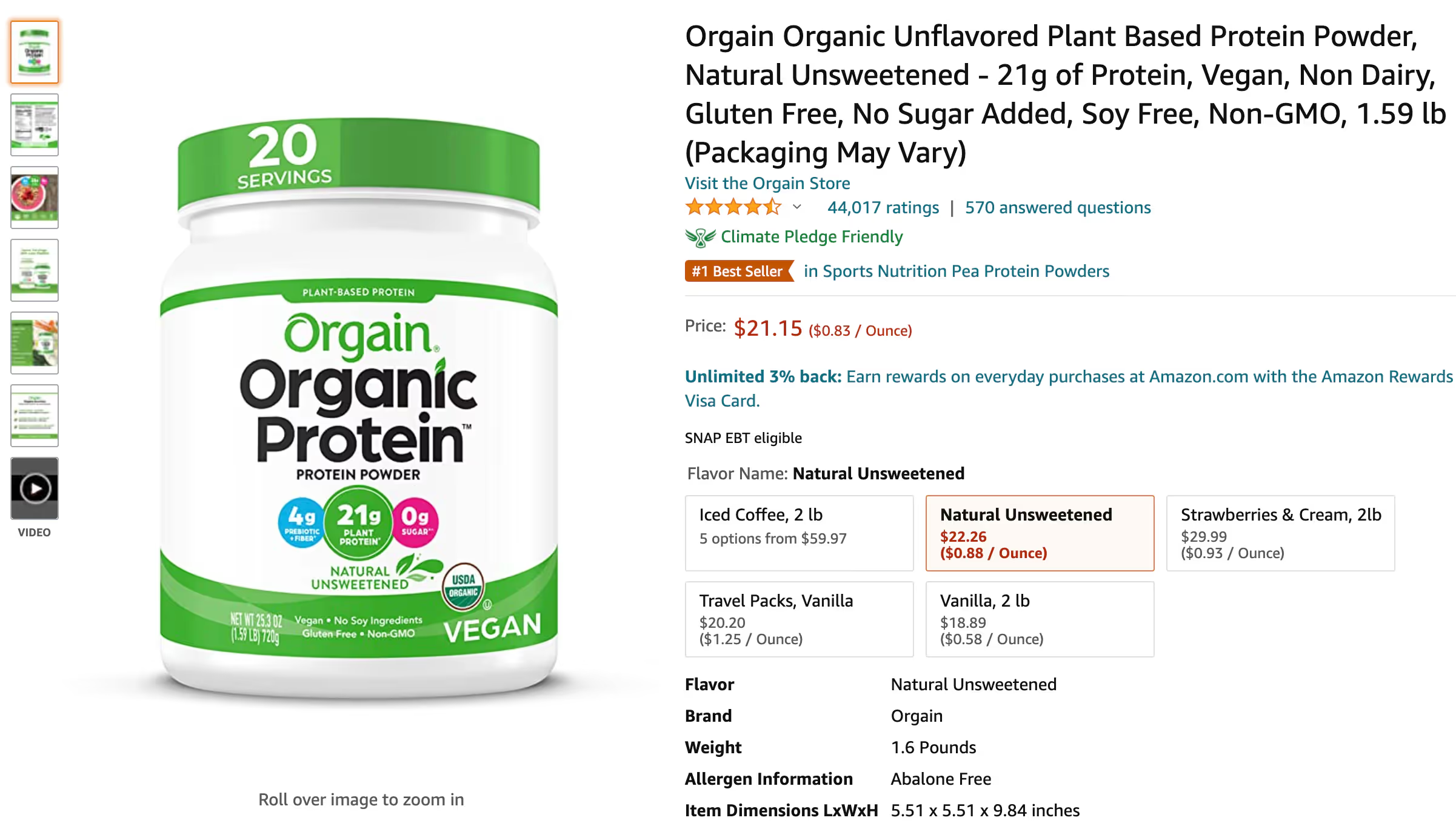
2. USE THE FLYWHEEL EFFECT TO YOUR ADVANTAGE
The flywheel effect happens when your product gains momentum and generates more sales as a result.
Here’s how it works:
- The more visible a product, the more visible it will become over time
- Less visible products stay hidden, since they rarely get clicks
While this can affect your sales (and thus your Amazon sales rank) negatively if your products are hidden several pages away in search results for your keyword, you can use the flywheel effect to your advantage and start gaining momentum.
The first thing you can do is make sure you publish enough products on the FBA to become eligible for Prime shipping. This will give you a boost of visibility, which you can then capitalize on by using sponsored ads and headline search ads together for a few weeks.
With the increased visibility, more sales will come, which means you can start pushing for reviews on your product. More reviews means more visibility, which means more sales, which means a better ranking!
3. OFFER COMPETITIVE PRICES
People don’t go shopping on Amazon to find the most high-end product they can find – they’re looking for the best deal.
Because of this, your product’s pricing will have a huge influence on whether or not you win the sale over your competitors.
Your prices need to at least be in the same range as your competitors, if not lower!
For instance, if you take a look at women’s joggers, they all fall within the range of about $2-15. So unless shoppers are a huge fan of the champion brand, they probably wouldn’t go for the $18 Champion joggers you can see here.
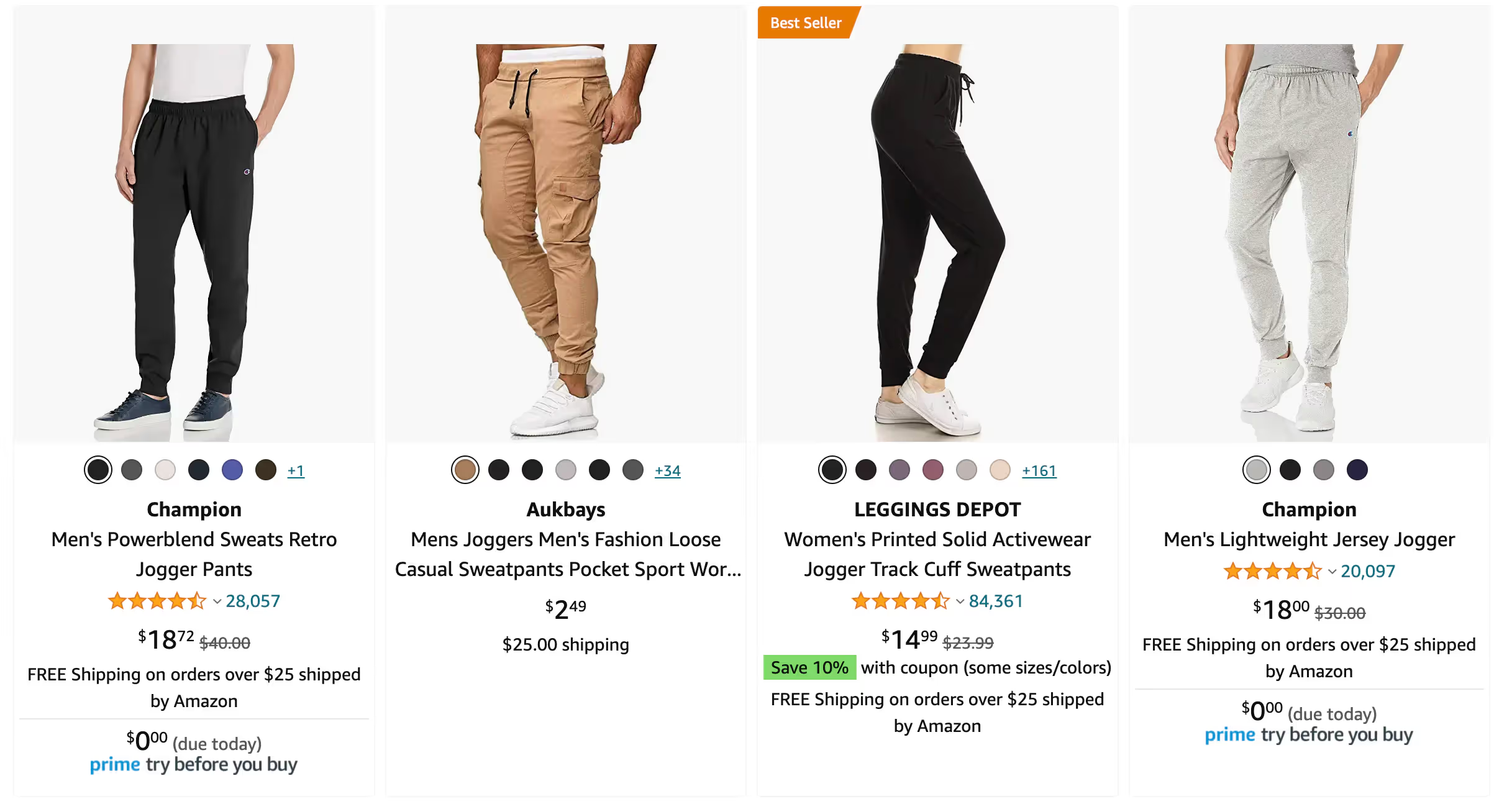
4. WRITE CLEAR PRODUCT DESCRIPTIONS
Don’t make the mistake of putting all your effort in an amazing product title, only to drop the ball on the description!
Some impulse buyers will purchase your products without reading the entire description, but many of them will scrutinize every word in order to compare with your competitors.
So don’t skip the chance to make a great impression.
Make sure your product description is:
- Clear and concise
- Free of spelling and grammar mistakes
- Optimized for your keywords
- Focused on the benefits of your product, not just the features
An effective product description can make or break your conversion rate – and as a result, your Amazon sales ranking, too.
Don’t hesitate to ask for help from a copywriter or marketing agency to create the best possible product descriptions!
5. ADD YOUR MOST IMPORTANT FEATURES IN BULLET POINTS
Some buyers are skimmers, which means they won’t read your entire product description.
This is why bullet points are so important.
Bullet points make your best features stand out in easy-to-read, bite-sized chunks of information, instead of being lost in a large paragraph of text.
Transforming your best features and benefits into bullet points alone can help you increase your conversion rates, especially since some shoppers won’t bother looking for this info if you don’t!
6. USE HD IMAGES
You can have the most amazing product title and description, but if your images fall short, you risk hurting your conversion rate and make fewer sales.
While a great picture can make your product stand out and look tempting to shoppers, a terrible picture can make the same product look cheap and undesirable.
Here are a few pointers to help your product images stand out positively:
- Make sure your product fills up 85% of the frame when users click on it
- Only use images that are at least 1000 pixels wide, although you should aim
for 2560 - Don’t include your logo, watermark, borders, or mannequins in your images
- Stick to JPEG/PNG/GIF/TIFF formats
Use professional lighting to create an attractive, high-quality image
You should also name your image correctly by avoiding blank spaces, underscores, hyphens, or any other special characters in the file name.
Finally, keep your image background white. Ever noticed most product images only use white backgrounds?

This makes images look simpler and more professional while also making the product itself stand out.
Remember that although your potential customers are looking for the best deal, they also want to purchase from professionals. Low quality photos will give a negative impression of not just your product, but your brand as a whole, which will tank your sales and your Amazon sales ranking!
7. DIFFERENTIATE YOUR PRODUCTS USING A VARIETY OF IMAGES
On Amazon, you’re competing with millions of other products, unless you are in a very niche category.
In addition to making your product images high quality, you should aim to make them stand out from your competitors, too.
Keep in mind that customers aren’t just buying a product – they’re purchasing a lifestyle, an experience. You can use images to tell a compelling story that converts browsers into buyers.
In addition to the images with white backgrounds and featured products, don’t be afraid to add some creativity to the mix! You can include images that don’t have a white background, as long as those images aren’t used as the main product image.
For example, consider adding lifestyle images that shows your product being used in a variety of ways. Help shoppers imagine themselves with the product in their lives.
Here’s a great example for baby swaddles – most products use similarly edited images, whereas the Happiest Baby brand uses this high quality image of a real-life situation:

8. INCLUDE INTERESTING GRAPHS OR INFOGRAPHICS
Because fewer sellers include graphs and infographics, these tools are a great way to stand out and make more sales than your competitors.
Graphs and infographics help communicate important ideas effectively without forcing customers to scroll through paragraphs and paragraphs of text.
You can use your infographics to counter common objections your customers have.Just take a look at this infographic showing customers how to use this swaddle:

Because the complexity of swaddling a baby is a common issue or objection customers may have, this simple, professionally-designed infographic easily shows how simple this product is to use.
9. ANSWER YOUR CUSTOMER’S QUESTIONS
In many cases, the only obstacle stopping a customer from giving you the sale is uncertainty.
While you can alleviate uncertainty with a detailed product description, some customers will still have questions.
Make sure you answer these questions to be displayed on your product page! Not only will this help you convert the customer who asked the question, but it will also help persuade future buyers who have similar concerns.
In some cases, other customers will answer the questions, but it’s better if you answer them yourself to remain in control of the language being used. Below, you can see that three out of six questions were answered by the brand:
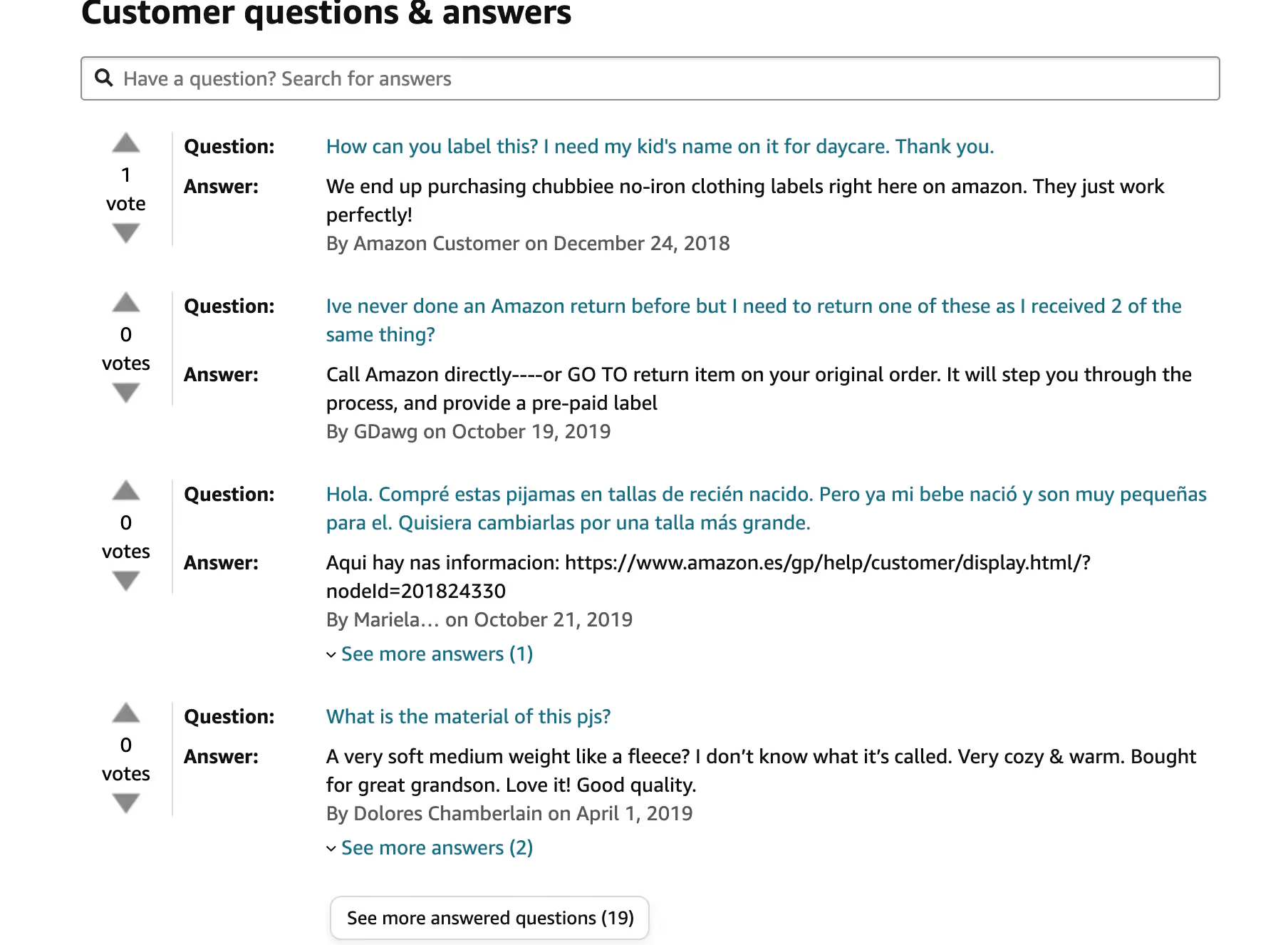
If you look at the last question, the answer given doesn’t paint the product in a positive light. If the brand had answered themselves, they could have remained more in control.
10. OFFER PRIME SHIPPING
Prime shipping is one of the main selling points of Amazon. So if you’re not offering this feature, you’ll lose out on many customers!
This means many customers will never have a chance to see your product – and thus, never have a chance to make you a sale – if you don’t offer Prime.
11. RUN SOME GIVEAWAYS
Although large discounts and giveaways will impact your profits in the short run, it can give you a huge boost of momentum.
More people will purchase your product if you run an 80-90% sale for a few days to a week, which will give your Amazon sales ranking a boost.
No, this spike in sales doesn’t guarantee a long-term improvement for your BSR. However, the short-term boost will help you become more visible, which will in turn make sure you generate more sales!
Just make sure you re-adjust your price soon after!
This will also give you a chance to obtain reviews, which we’re covering next.
12. FOCUS ON REVIEWS
Shoppers know that a product with positive but few reviews aren’t as safe a purchase as similar products with a higher number of reviews.
The more reviews a product has, the more the rating can be trusted. For instance, if you only have three or four negative reviews out of several hundred reviews, your future customers will see that the vast majority of your customers are happy with your product.
Follow up with your customers via email to ask for reviews, but also consider sending free items in exchange for an unbiased review.
Remember that purchasing positive reviews is against Amazon’s terms of service, so don’t be tempted to do this!
13. DON’T FORGET TO OPTIMIZE FOR GOOGLE
It’s important to optimize your Amazon listing, but Google is just as important, if not more!
That’s because Amazon products will show up for Google searches, too.

We tend to forget that Amazon is, at its core, just another website. So optimizing your products for SEO is just as important on Amazon as for any eCommerce website if you want to show up organically on Google.
If you skip this step, you’ll lose every potential buyer who uses Google as a primary search engine, so don’t make this mistake!
Summary
So many factors come into play when it comes to your Amazon sales ranking, but its influence on your success is too high to overlook!
By putting your effort into rising in the Amazon rankings, you’ll increase your chances of beating out the competition and making consistent sales.
Trust your Amazon business to a 7-figure Amazon Marketing Agency that will help your brand growth in the next 90 days!














.webp)

.webp)








.webp)










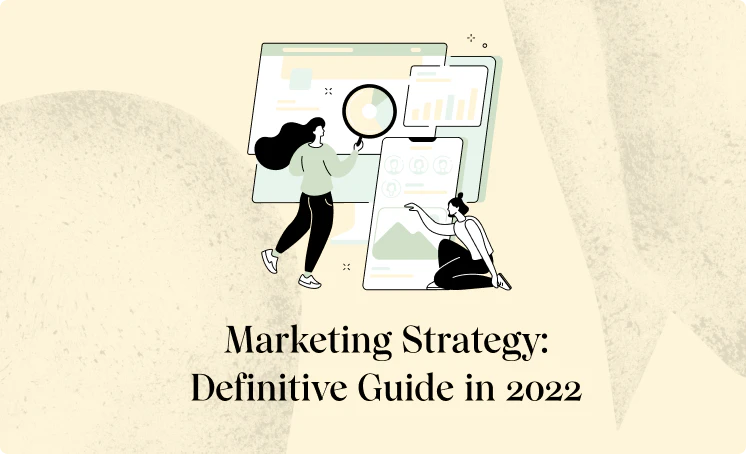































.webp)





